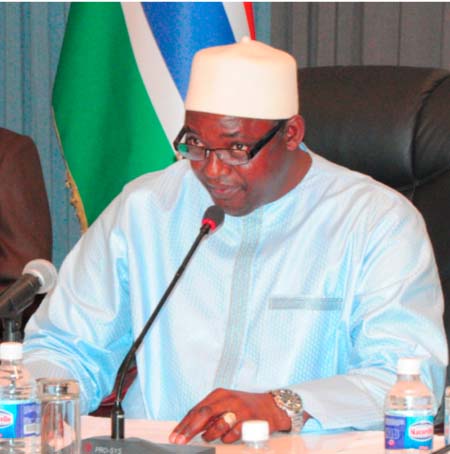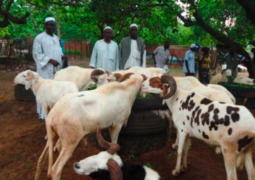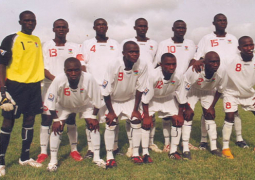
President
Adama Barrow on Wednesday inaugurated Bansang hydrology complex at a ceremony
held in Central River Region. The hydrology division of the Department of Water
Resources will use the new complex to monitor water quality and quantity of the
country.
Addressing
the gathering, President Barrow expressed appreciation to the Global
Environment Facility (GEF) and the United Nations Development Program (UNDP)
not only for their current assistance, but also for the support that they have
provided to the country over many years.
‘It
is a partnership which has benefited many of our population, especially in the
areas of climate change adaptation’.
The
facility, he said, was constructed under the UNDP component of the
GEF/UNDP/UNEP and the Government of The Gambia Strengthening Climate Services
and Early Warning Systems Phase II Project.
‘This
project is in conformity with the major climate change strategic documents of
The Gambia. The national communication reports provide information on projected
impacts of climate change on key sectors of the national economy and on the
potential adaptation options to climate change’.
The
Gambian leader indicated that the project is also highly consistent with The
Gambia’s national priorities and plans, as it reflects priority activities
identified in both the first national communication and the NAPA.
He
observed that the main challenge facing the country, in the context of climate
change, is its high vulnerability to climate change and climate variability
worsened by low capacity to address and adapt to the phenomenon. This low
capacity is evident at all levels – local, regional and national.
‘Among
the major barriers are the inability to effectively predict climate change
events, assess potential impacts and deliver short-term alerts, or longer-term
warnings that can contribute to adaptive responses and development planning’.
Barrow
highlighted that the capacity for climate monitoring and collection of reliable
data and information on climate change and the development of alerts and early
warnings was low because of a number of infrastructural constraints and human
capacity limitations including: inadequate numbers and quality of equipment,
tools and data processing hardware and software to collect and analyse climate
information; shortage of qualified personnel that can analyse data and
transform processed information into weather advisories and early warnings and
limited capacity at the local level for uptake of climate-related messaging and
ability to respond to advisories and warnings.
‘Many
of these constraints have been addressed under this project and through other
government interventions, thereby strengthening the early warning system in The
Gambia.
The
Gambia is increasingly prone to wind storms, droughts, floods, rainfall
variability, coastal erosion, and sea-level rise. When coupled with existing
socioeconomic challenges, these impacts stunt development and increase the
country’s vulnerability. As it is, The Gambia is a low-income country, with a
high dependence on agriculture, which makes large segments of the population
extremely vulnerable to erratic rainfall and other climate-induced events’.
Farmers,
he went on, have been experiencing shorter crop growing seasons due to drought
and shallow wells that provided supplementary irrigation to their rain-fed
systems, drying out too early in the season.





